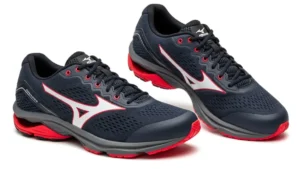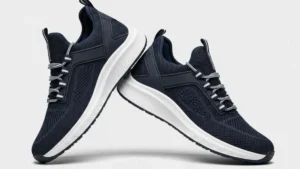
The best running shorts are lightweight, breathable, and designed to prevent chafing. They use quick-dry fabrics and fit snugly without restricting movement. Pockets, liners, and waistband design also matter. These features make them practical for short sprints, long-distance runs, and daily training.
Compression shorts are better for support and stability, while loose shorts allow more airflow. Compression reduces fatigue and keeps muscles steady, but loose shorts feel lighter. Many runners prefer a 2-in-1 style that combines support inside with coverage outside, making them versatile for both speed and comfort.
The best shorts for comfort and speed are short inseam designs with moisture-wicking fabrics. A 3–5 inch inseam keeps you fast, while a built-in liner prevents irritation. Choosing between compression, split, or 2-in-1 shorts depends on your preference for muscle support, coverage, and breathability during runs.
You’re going to learn which shorts fit different running goals. I’ll show you how fabric, length, and design affect comfort, speed, and long-distance performance. You’ll also see real-world examples, expert tips, and where data supports each choice. By the end, you’ll know exactly what style fits your needs.
What Makes Running Shorts Comfortable?
Comfortable running shorts are made from breathable, moisture-wicking fabric with flat seams and a secure waistband. Polyester and spandex blends are most common, as they balance stretch with durability. Shorts that dry fast, prevent rubbing, and allow airflow help runners stay focused without irritation during short or long runs.
The fabric plays the biggest role. Polyester is lightweight and quick-drying, while spandex gives flexibility. Some brands mix the two for balance. Flat seams reduce friction where fabric meets skin, and a soft waistband prevents digging into the waist. Together, these details shape overall comfort.
Are Compression Shorts Better for Running?
Compression shorts support muscles, reduce fatigue, and improve stability. They feel snug and encourage blood flow, which helps recovery. Loose shorts, on the other hand, allow more air circulation and feel lighter. Both have benefits, but compression shorts are performance-focused, while loose shorts prioritize breathability and freedom.
Compression works best in long runs or races where endurance matters. The tight fit reduces vibration in the muscles, which helps conserve energy. Loose shorts shine in hot weather when airflow is more important than compression. Many runners compromise with 2-in-1 shorts that offer both support and breathability.
How to Choose Shorts for Speed
The best shorts for speed are short inseam designs, usually 3–5 inches. They’re lightweight, reduce drag, and allow legs to move freely. This design helps runners stay quick and efficient. Shorter inseams are especially useful for racing, where unrestricted movement makes every stride count.
Sprinters usually prefer split shorts because the open sides give maximum range. Marathon runners lean toward lightweight shorts with liners to prevent irritation over distance. In both cases, shorter designs reduce bulk and help maintain speed without distractions.
Best Shorts Length for Running
The best shorts length depends on distance and personal comfort. Shorter lengths (3–5 inches) are ideal for speed and racing. Medium lengths (5–7 inches) are balanced for daily training. Longer lengths (7–9 inches) provide more coverage and work well for trail running or casual use.
For runners chasing personal records, shorter inseams help keep legs moving fast. Those who run daily for fitness usually prefer mid-length shorts that combine comfort with versatility. Trail runners or beginners often lean toward longer shorts for coverage and stability on rough paths.
Top Features of Performance Running Shorts
The top features of performance running shorts are breathable fabric, a secure waistband, supportive liner, functional pockets, and lightweight construction with the right inseam length. Each element affects comfort, speed, and durability, making these details essential when choosing shorts designed for peak running performance.
Fabric and Breathability
Breathable fabrics keep runners cool and dry by pulling sweat away from the body. Polyester and spandex blends are most common because they stretch, dry fast, and hold shape well. Cotton is avoided since it traps moisture, causing discomfort and chafing.
Good breathability prevents overheating and allows airflow. Mesh panels are often added in high-sweat areas like the inner thigh or back waist to improve ventilation.
Waistband and Fit
A secure waistband prevents shorts from slipping, while adjustable designs give flexibility for different body types. Wide, elastic waistbands with internal drawstrings are the most reliable, holding shorts in place without digging into the skin.
A poor waistband causes constant readjustment during runs. Flat, smooth bands help avoid rubbing against the waistline, especially on long runs.
Liner and Support
A built-in liner supports muscles, reduces friction, and keeps everything in place. Mesh liners add airflow, while compression-style liners give more stability. This layer is crucial for runners who want to avoid chafing and extra layers of clothing.
Some runners prefer shorts without liners so they can wear their own compression base. But most performance shorts include a liner for convenience.
Storage Pockets
Functional storage pockets allow runners to carry essentials like keys, gels, or a phone. Zippered pockets keep items secure, while mesh side pockets are best for lightweight storage.
For long-distance runners, pockets are more than convenience they’re a necessity. Minimalists often prefer hidden waistband pockets that hold items flat without bounce.
Weight and Inseam
Lightweight shorts with the right inseam length improve running efficiency. A 3–5 inch inseam works best for speed, while 5–7 inches are versatile for daily runs. Longer inseams add coverage but may slow movement slightly. Racers prioritize short and light shorts to reduce drag. Everyday runners often choose mid-length for balance.
Best Running Shorts for Men
The best running shorts for men have solid support, practical pocket space, and an inseam length suited to performance goals. Men often prefer 5-inch or 7-inch shorts for balance, with built-in liners and secure waistbands. Zippered pockets are a priority for carrying essentials safely.
Men value support from liners or compression layers to reduce movement and irritation. A well-placed pocket can hold a phone, keys, or gels without bouncing. Inseam choice depends on the type of running—shorter for speed, medium for daily training, and longer for coverage.
Product comparison suggestion:
- Nike Aeroswift 2-Inch Shorts – Best for speed-focused runners.
- Adidas Own the Run 5-Inch Shorts – Balanced option for training and racing.
- Under Armour Launch 7-Inch Shorts – More coverage with roomy storage pockets.
Best Running Shorts for Women
The best running shorts for women focus on a comfortable fit, waist design that stays secure, and features that prevent chafing. High-rise waistbands are popular for stability, while mid-rise shorts suit casual runners. Lightweight liners and smooth seams help women stay comfortable during long runs and intense workouts.
Are 2-in-1 Running Shorts Worth It?
2-in-1 running shorts are a smart choice if you want inner support with outer coverage. They help reduce chafing, stay in place during long runs, and offer a casual look. While regular shorts are lighter, 2-in-1 designs provide added stability and confidence, making them worth it for many runners.
Tips to Prevent Chafing While Running
Wear moisture-wicking fabrics, choose the right fit, and apply anti-chafing balm. Chafing occurs when skin rubs against fabric or itself, so opting for smooth seams and snug-fitting shorts can greatly reduce irritation. Prioritizing comfort-focused gear helps keep your runs pain-free and more enjoyable.
How to Pick Shorts for Marathon Training
Pick lightweight shorts with secure pockets, a built-in liner, and moisture-wicking fabric. Marathon shorts should balance comfort, support, and storage without slowing you down, ensuring endurance-ready performance from start to finish.
Best Running Shorts by Budget
Running shorts come in all price ranges—from affordable picks under $30 to premium models over $60. The right choice depends on your needs, whether budget-friendly basics, balanced mid-range designs, or high-end shorts with advanced fabrics and features.
Final Thought
The best running shorts combine comfort, speed, and performance by balancing breathability, fit, and support. Whether you choose compression, split, or 2-in-1 shorts, the right pair can reduce chafing, improve mobility, and enhance your overall running experience.
FAQs
What’s the best running shorts fabric?
The best running shorts fabrics are polyester and spandex blends because they are lightweight, breathable, and moisture-wicking. These materials dry quickly and keep you cool during long runs, unlike cotton which holds sweat and causes chafing.
Do I need liners in running shorts?
Yes, liners help with support, comfort, and chafing prevention. Built-in liners replace the need for extra underwear, reducing friction and keeping sweat away from the skin. However, if you prefer compression shorts, you can choose linerless running shorts to wear over them.
How often should I replace running shorts?
Most runners replace shorts every 6–12 months, depending on use. If the fabric loses elasticity, the waistband loosens, or seams cause irritation, it’s time for a new pair. High-mileage runners may need replacements sooner.
Should running shorts be tight or loose?
It depends on your preference and running goals. Compression shorts are tight, offering muscle support and reducing fatigue. Loose or split shorts allow more airflow and freedom of movement. Many runners alternate between the two based on distance and conditions.
Can I wear normal gym shorts for running?
You can, but it’s not ideal. Gym shorts lack moisture-wicking liners and lightweight design, which can cause chafing and discomfort during long runs. Running shorts are specifically engineered for performance, making them the better choice for both comfort and speed.




